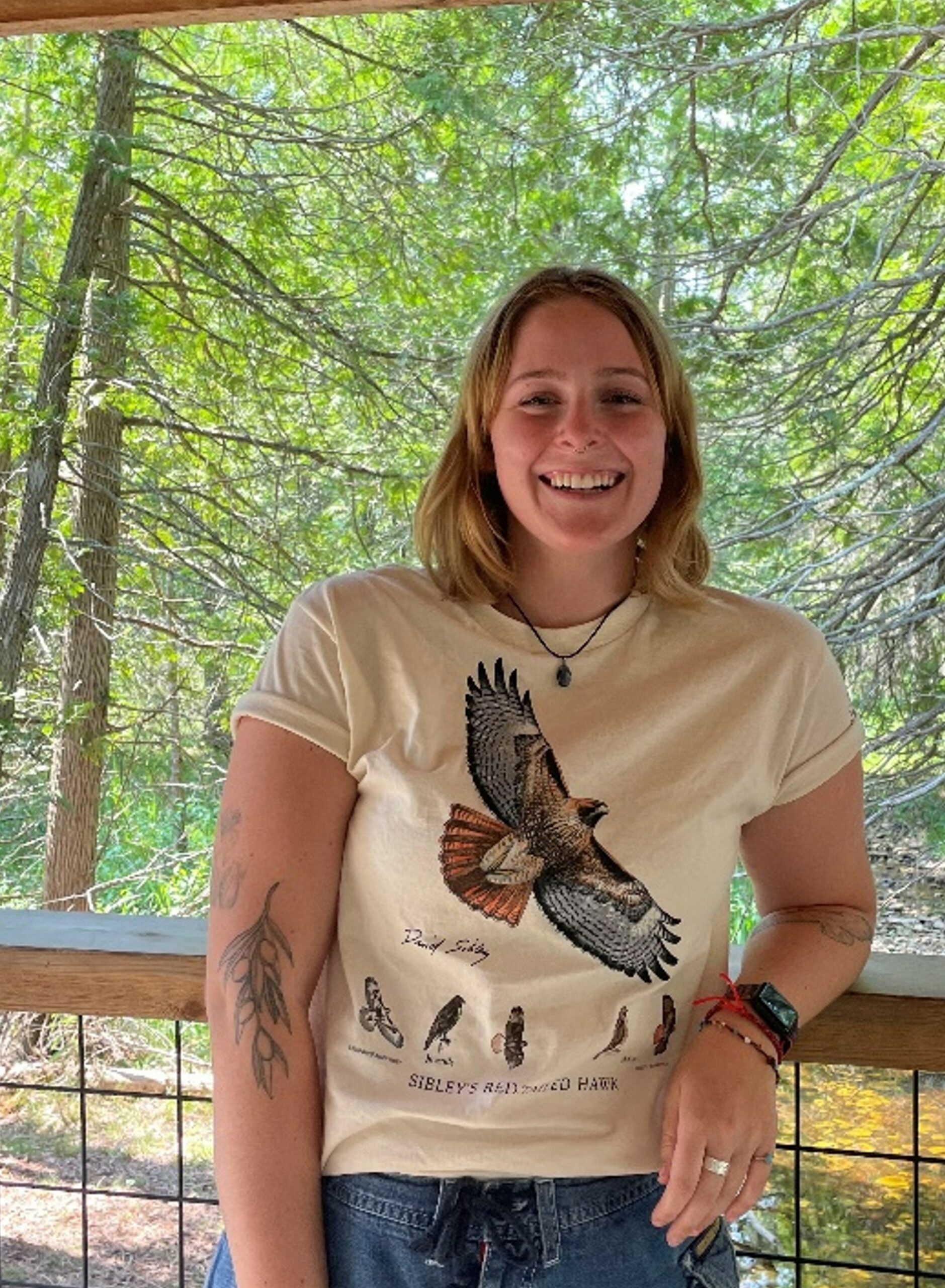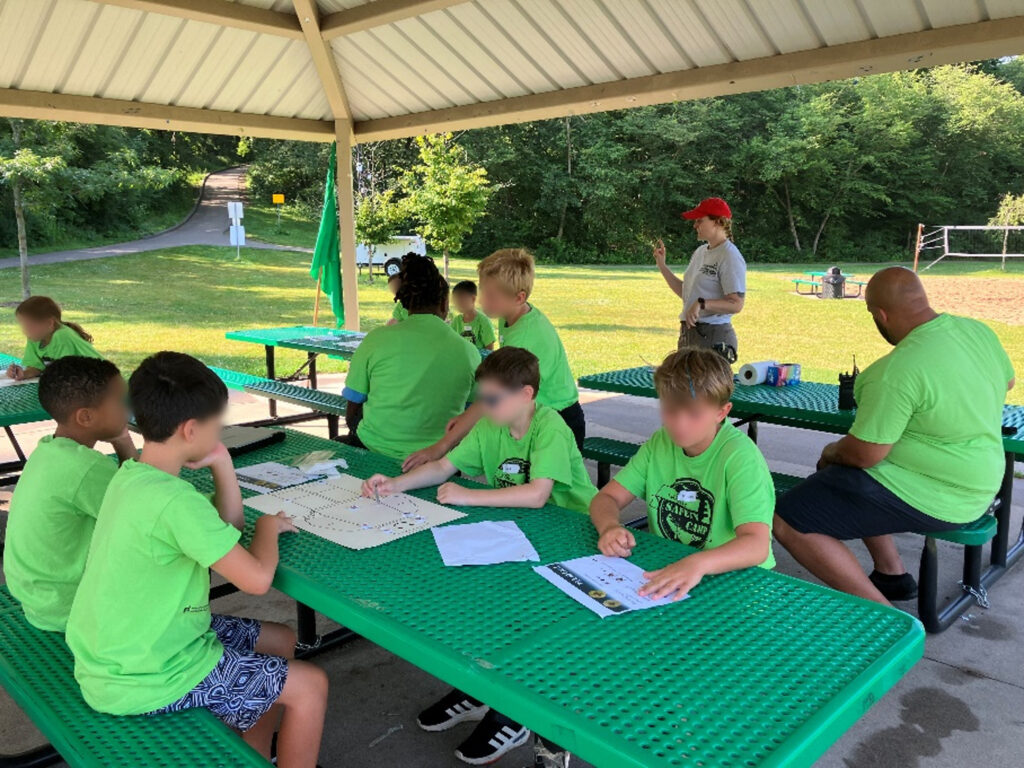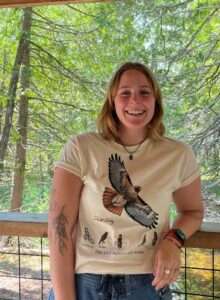Individual Placement Spotlight Series: Kate Carnahan

By Jesse Wolk, Utility Mapping Specialist Individual Placement / AmeriCorps Member placed at Minnesota Department of Natural Resources, Division of Parks and Trails
VII: Building a Base
The Individual Placement (I.P.) Spotlight Blog is a series of interviews between Jesse Wolk and his fellow I.P. members. The goal of the series is to highlight their unique positions, projects, and backgrounds while simultaneously reflecting on their service term in the context of the Natural Resources career field in Minnesota. In the seventh edition of the series, Building a Base, the spotlight is shifted to our Outdoor Recreation Specialist – Kate Carnahan!
My interest in the outdoors didn’t truly spark until college, but the kindling that caught that spark was built by my parents. The family environment that they created was one that celebrated nature. I had the privilege of growing up in Wisconsin’s portion of the Driftless area where my mother and father taught me how to fish, camp, ski, snowshoe, and paddle. They weren’t experts but they were social. So, they engaged our rural community to fill in the gaps. For example, my parents weren’t hunters, but a good family friend took me to their deer stand once to see if I’d like it. Moments like these gave me inspiration to enjoy being outside in new ways. To pursue these inspirations, I was able to buy and borrow used gear from my community. With this support network, I became a blooming outdoor hobbyist which eventually set me on the career path that I am on now.
Without my parents and community, I simply would not know how to get into outdoor recreation. I’d be overwhelmed by the numerous choices to be made, my ego would get frustrated by my lack of skills, and I would have to spend a lot of money just to buy the wrong gear. Additionally, I am a white, cisgendered, able-bodied, heterosexual man. I feel respected and welcomed in outdoor spaces across Minnesota. Many others with different identities, and abilities, do not. If my identity were different and I didn’t have my support network, outdoor recreation might feel more like joke than a reality.
For these reasons, there has been a large movement to make outdoor spaces more accessible to Minnesotans across the state. Besides a growing social consciousness that believes in equity, natural resource professionals also recognize that the state’s demographics are shifting. According to the Minnesota State Demographic Center, between 2010 and 2018, “(Minnesota) added five times as many People of Color as non-Hispanic White residents. [These] populations of Color are distributed unevenly across the state, and are more likely to live in metro areas than rural areas.” The population of Minnesota is shifting to a larger portion of people that have many barriers to accessing the outdoors.
Non-profits, clubs, grants, and land management organizations around the state are dedicated to removing those barriers for anyone that has typically been gatekept from outdoor spaces. Minnesota’s Department of Natural Resources (DNR) has a program dedicated to opening this gate and I.P., member Kate Carnahan, is one of its stewards.
The “I Can!” program is, “designed for families to try any or all [outdoor activities] for the first time,” in order to build, “outdoor skills programs for beginners.” It was born in the 2010s out of a recognition that Minnesota’s population was getting older, more metropolitan, and more diverse but less interested, and skilled, in outdoor recreation. The program provides affordable activities like mountain biking, paddling, camping, and fishing to less experienced families. In turn, it hopes to strengthen the base of outdoor recreationists and stimulate the curiosity that I had in a generation that is increasingly screen-bound. The programming is taught to families throughout the summer by CCMI Youth Outdoors members who are in turn managed by Kate.

This position is a natural step for Kate. Growing up in the suburbs of Columbus, Kate told me that her family was not interested in outdoor recreation. That being said, she does have fond memories of going to the Columbus Zoo, which eventually inspired her to graduate with dual Bachelors of Science in Wildlife Biology and Environmental Science, Policy, and Management at the University of Minnesota Twin Cities in the spring of 2023.

After graduating, Kate was a Naturalist Intern at The Ridges Sanctuary in Door County, Wisconsin. Kate split her time between leading naturalist programming with children and working on an ethnobotany research paper that focused on the Potawatomi and Menominee nations and explored their traditional ecological knowledge of Door County’s flora. Following that summer, Kate served in a CCMI Field Crew for the Three Rivers Park District where she performed invasive species management and did various propagation and habitat management projects for their forestry nursery.

Coming out of these two experiences, Kate enjoyed the Naturalist experience the most. The mixture of community science and program development appealed to her. However, Kate wanted an experience where she got to learn how programs are developed, funded, and planned from the inside. The Outdoor Recreation Specialist position within the I.P. program suited those needs.
Currently, Kate is in the busy time of her season. The, “I Can!” programming is primarily done during the summer. She has been busy contacting participants for trip information and working with the Youth Outdoors crew that lead the trips. This leadership role has been an opportunity of growth for her. She told me that she’s never overseen a group this big before and that it has helped her with her professional communication skills. While I poked around for some drama within the crew she managed, everything appears to be going smoothly.
Most of all, Kate has learned more about what she wants in her next position. She wants a position where she is leading more programming and also is, “itching” to be outside. Kate notes that she went from one extreme, being in a field crew and working outside constantly, to a desk job where she doesn’t interact face-to-face with people very frequently. After her service term is completed, Kate hopes to find a nature-frequent Naturalist or Outdoor Education position that blends her ability to lead programming with her passion for leadership.
Minnesota’s outdoor recreation scene is changing. Those that like to hunt and fish are getting older. Younger populations aren’t following suit and, additionally, are much more diverse. Land management organizations must adapt to this shifting recreation culture. Kate’s role is to facilitate that shift and create a knowledgebase in a new generation of Minnesotans. The more people engaged, the stronger the support for conservation projects, and the more of Minnesota that we can protect.
Thanks for reading and catch you in a few weeks!
– Jesse Wolk